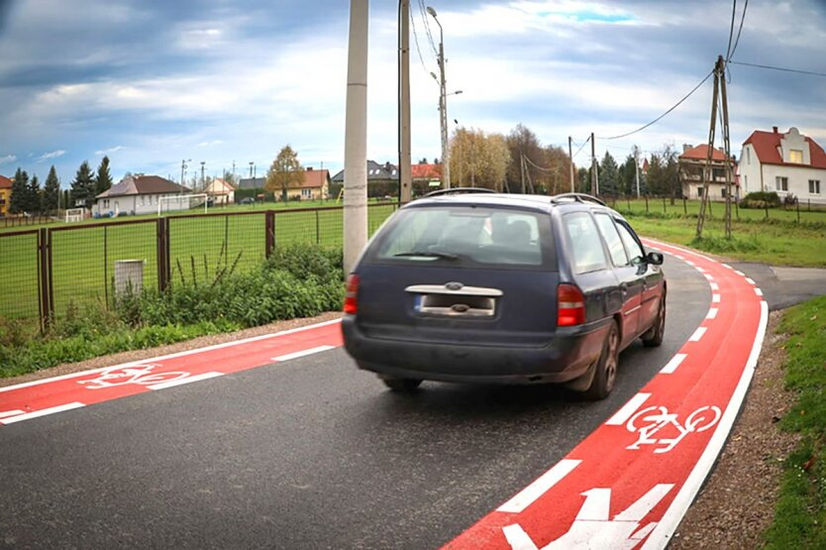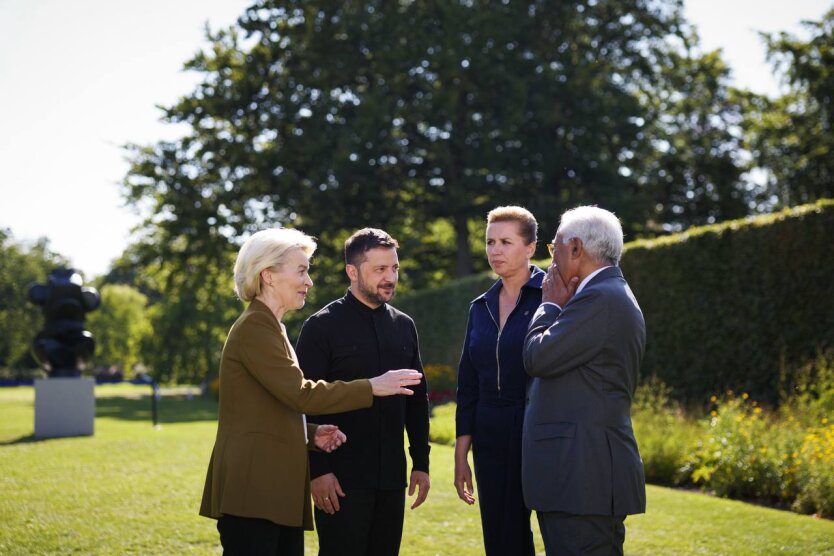Drivers explained how to drive on new roads with the "2 minus 1" sign.


Ukrainian drivers were told how to properly drive on a road with the new "2 minus 1" sign. Recently, such a sign also appeared in Poland.
In some European countries, such as Denmark, Sweden, the Netherlands, Germany, and now Poland, a new traffic organization scheme called "2 minus 1" is being implemented on local roads.
Please note that "2-1" are roads with a single carriageway for vehicle traffic in both directions without a dividing marking in the middle, but with separated dashed lines for pedestrian and bicycle traffic on both sides.
At the moment, there is only one such road in the whole country – Niepołomice in the Lesser Poland Voivodeship. On Sportowa Street, they are currently driving according to the "2-1" standard. Thus, the pedestrian and bicycle lanes have been painted red and corresponding signs with traffic rule explanations have been installed.
Despite the fact that the lanes are painted red, which is typical for bicycle paths, pedestrian traffic is allowed on them. Moreover, cyclists must yield to pedestrians.
It is noted that there is currently no direct reference to roads with the "2 minus 1" sign in the Polish traffic regulations. However, there are technological requirements regarding this in the order of the Polish Ministry of Infrastructure dated June 24, 2022.
Attention is also drawn to the fact that routes with the "2 minus 1" organization have been marked in Western European countries for a long Time. Denmark is the leader in this area, but such road sections also exist in the Netherlands, Switzerland, Germany, and Sweden.
In particular, the "2 minus 1" road has the following traffic organization:
- car drivers (including motorcycles) move in the middle of the road in a designated two-way traffic lane;
- pedestrians, cyclists, scooter users, and personal transport device users move in one-way side lanes (so-called lanes);
- when two cars meet on the road (e.g., traveling in opposite directions), drivers must change their trajectory so the vehicles can pass each other – for this, they move to the side lanes;
- after passing, drivers return to the central part of the road designated for vehicle traffic;
- drivers who move onto the side lanes (markers) yield to pedestrians, cyclists, and other users for whom this road section is intended;
- in road sections where both pedestrians and cyclists can move, pedestrians have priority;
- motor vehicle drivers should ensure they do not endanger other road users when maneuvering onto the side lane for cyclists and pedestrians.
The publication also notes that traffic lanes have drawbacks, but such a road has advantages as well. Firstly, it is a good solution where there is no space for a road with separate communication routes for pedestrians and cyclists. Research has shown that bicycle traffic on such a road increased by 50%, and the number of accidents decreased by 25%.
Another reason is that the costs of building a "2 minus 1" road are lower, and the maintenance costs are also lower.
Remind you, drivers explained how to replace the first-time issued licenses without passing exams.
Read also
- Tallinn Mechanism: Sweden Will Help Ukraine with Cyber Resilience
- China Fears Ukraine's Victory: Wang Yi Explained Why Beijing Cannot Allow Russia's Defeat
- Trump Wins: Congress Approves Budget Bill by Narrow Margin
- Foreign service will be considered for pension: Ukrainians were explained an important nuance
- Failures in 'Reserve+': how to avoid fines for military registration documents
- Zelensky summed up the meeting with EU leaders: Eurointegration, new sanctions, and defense cooperation










